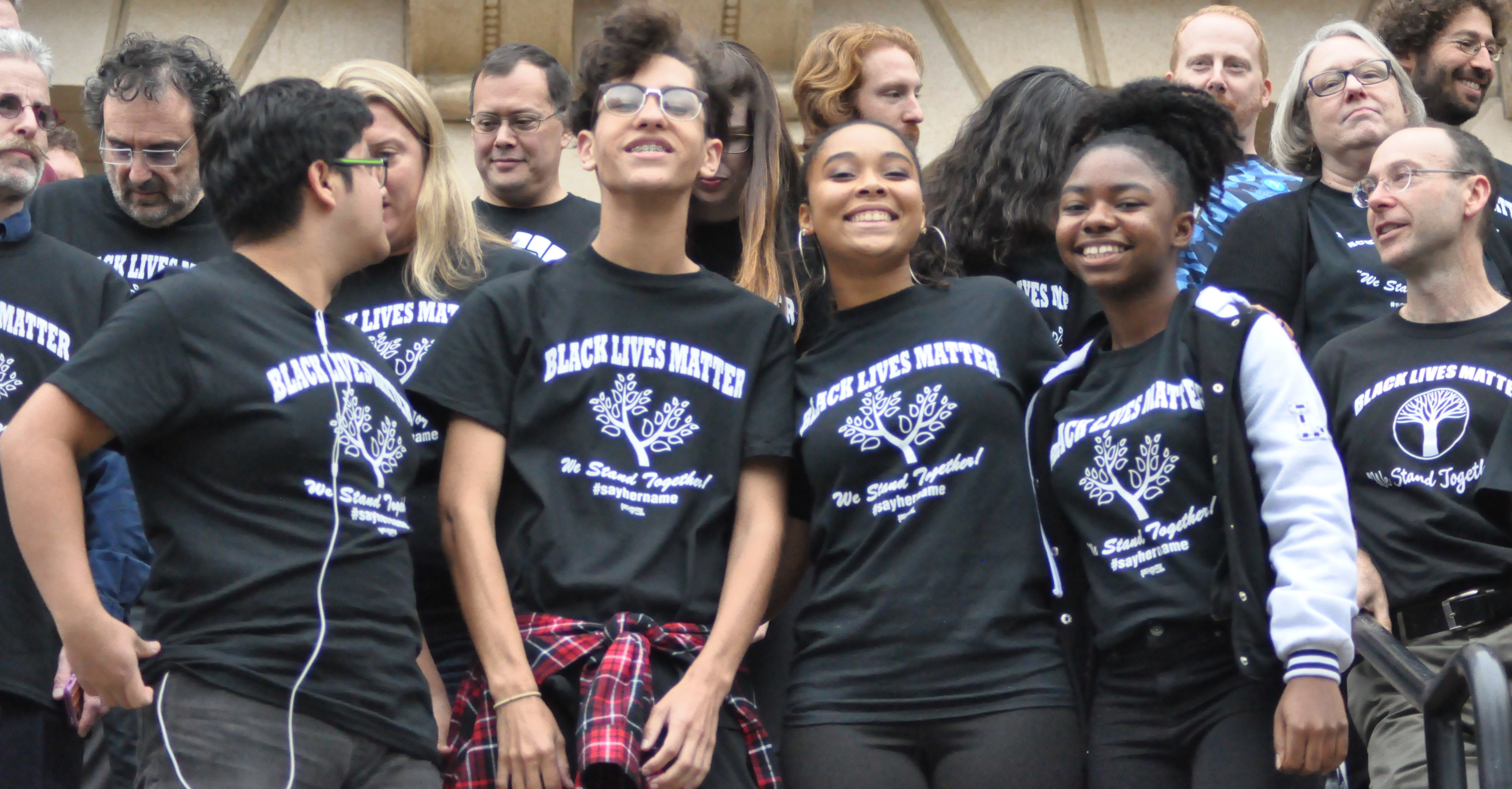On Wednesday Oct. 19, simple, dark t-shirts that read “Black Lives Matter” covered the chests of around 2,000 Seattle Public Schools teachers. These teachers were bravely taking a stand for the ever-growing Black Lives Matter movement. After bomb threats that almost derailed an empowerment event for African-American students at John Muir Elementary School, teachers knew something had to be done. SPS staff worked together to raise awareness in schools, and the communities that surround them, to the importance of this campaign.
“I know in education there is a gap typically between white students and then students of color, so I felt like it was a good thing to show support in trying to minimize that gap, specifically in education,” says Roosevelt teacher, Margaux Isaman. She adds, “For me, it was all about wanting my students to know that I support everyone.”
The teachers’ promotion of this movement was widely appreciated by students across RHS. Sophomore Matilda Henehan says, “It’’s really interesting that our teachers support a cause that isn’t brought up at school a lot.” One reason that this issue isn’t talked about very often in the classroom is because of the hesitancy some individuals have about possibly forcing opinions onto young adults. “I actually wasn’t sure if I wanted to wear the shirt, not because I don’t support the idea, but because I would hope that my students just know that…I care about them… through our interactions,” Isaman responds.
One teacher was motivated by the lack of support. Cindy Jatul says, “There was some backlash that originally happened, so there was the idea that other teachers should do this and be in solidarity.” Jatul believes that the topic of Black Lives Matter should be one that is frequently addressed in schools. “I held discussions in all of my classes about the difference between equality, equity, and racial justice, and we had some great discussions,” says Jatul. At a school with a student population of 68% Caucasian and only 4.4% African American, there are certain racial issues that Roosevelt tends to overlook. “I think it’s very important that we show our awareness to the students, because we have institutional racism here in Seattle Public Schools. That’s evident in the fact that we have a suspension rate that is around four times greater for black students than that for white students. We have real issues here, and as teachers we need to show that we care for our African-American students, and we want to see these things improved,” Jatul adds.
RHS junior Joyce Musafiri, who is a member of BSU, was incredibly pleased with the teachers’ efforts to incorporate this topic into class conversations. “I thought it was amazing and I love them for it,” Musafiri responds. This reaction is an obvious example of the positive impact teacher support can have. When Isaman says, “I know that there are some students who have felt empowered because this,” she is completely right.
“Any time you organize…and you get people involved, you get people thinking about the issue. That is beyond just getting people to wear a shirt. That’s getting people to be engaged in the problem,” Jatul says.
The teachers’ display definitely did not go unnoticed. It had an impact. It made people think.
